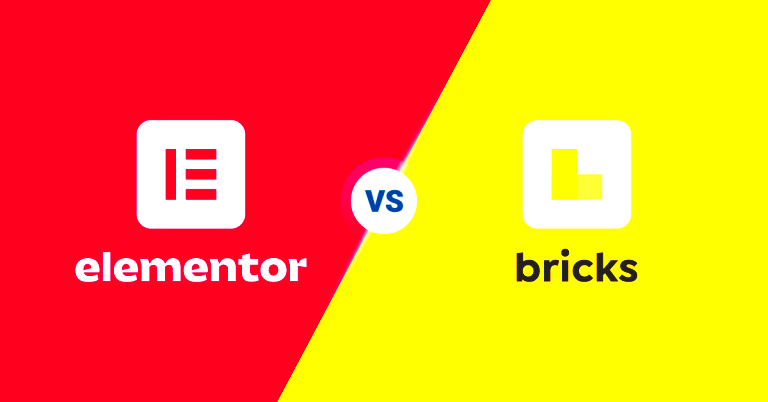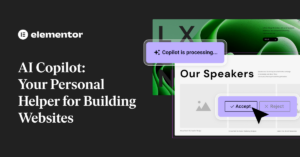When it comes to building WordPress websites, two popular options often come up: Bricks and Elementor. Both of these tools offer unique features and capabilities that cater to a wide range of users. Whether you’re a seasoned developer or a beginner, understanding the strengths and weaknesses of each can help you make the right choice for your project. In this blog post, we’ll dive deep into what Bricks is all about and how it stacks up against Elementor in various aspects of web design.
What is Bricks?
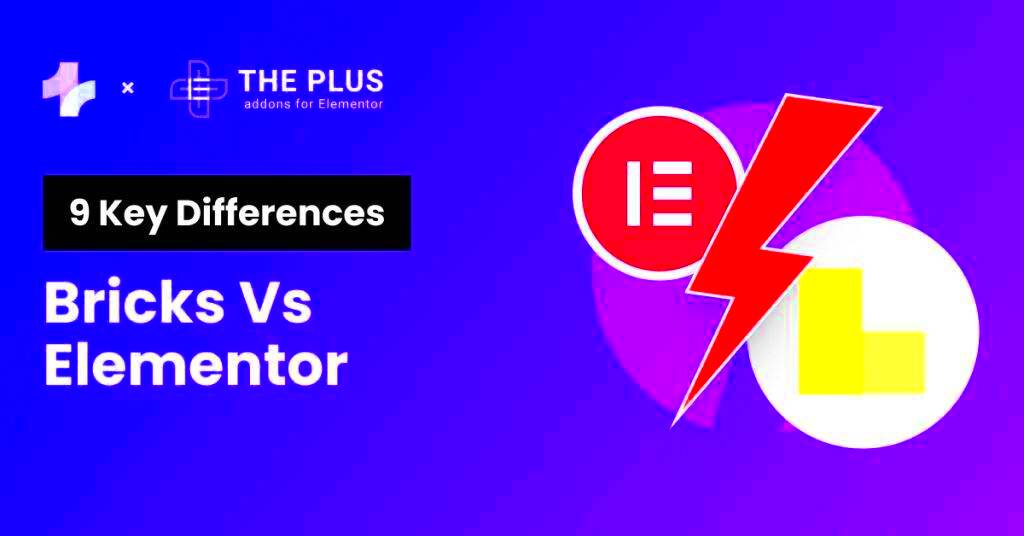
Bricks is a relatively new page builder for WordPress that emphasizes speed, flexibility, and a user-friendly experience. It’s designed to allow users to create custom layouts without having to dive into code. Here’s a closer look at what makes Bricks stand out:
- Performance: Bricks is known for its impressive performance and speed. It leverages the latest technologies to ensure that the websites you build are lightning fast, which is a crucial factor for user experience and SEO.
- Full Site Editing: Unlike some traditional page builders, Bricks allows you to edit your entire website layout, not just the content area. This means you can make global changes that affect the header, footer, and other templated sections seamlessly.
- Dynamic Data: What sets Bricks apart is its ability to handle dynamic data effortlessly. This feature is especially useful for developers and advanced users who need more control over their content.
- Custom Code Options: If you have coding knowledge, Bricks offers advanced options for CSS and JavaScript, enabling you to tap into your creativity fully.
In summary, Bricks is an innovative page builder that aims to combine user-friendliness with powerful, developer-oriented features, making it a worthy contender in the page builder arena.
What is Elementor?
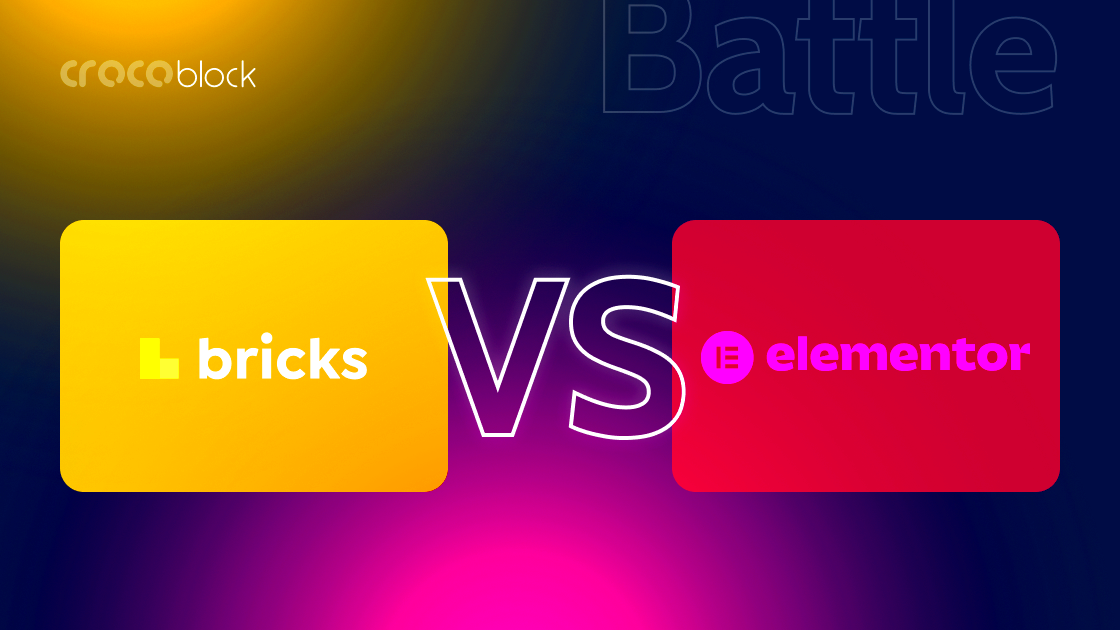
Elementor is a popular WordPress page builder that allows users to create stunning and highly customizable web pages with ease. Released in 2016, it quickly gained traction in the WordPress community and has since become one of the leading tools for website design. What sets Elementor apart is its intuitive drag-and-drop interface, which enables both beginners and seasoned web developers to design pages without needing any coding skills.
One of the key attractions of Elementor is its extensive library of pre-made templates and blocks, making it easy to get started quickly. Users can choose from a diverse range of design elements, including headers, footers, buttons, and image galleries, and customize them to fit their brand identity. But that’s not all; Elementor also allows for real-time editing, meaning you can see your changes as you make them, which streamlines the design process significantly.
Elementor Pro, the premium version, takes the functionality to another level by offering advanced features like theme builder capabilities, custom landing pages, and an array of widgets (like pricing tables, testimonials, and sliders) that enhance the user experience.
Overall, Elementor has become synonymous with ease and flexibility in web design, making it an ideal choice for those who want to develop a professional-looking website without the technical headaches that can sometimes come with coding.
Key Features of Bricks
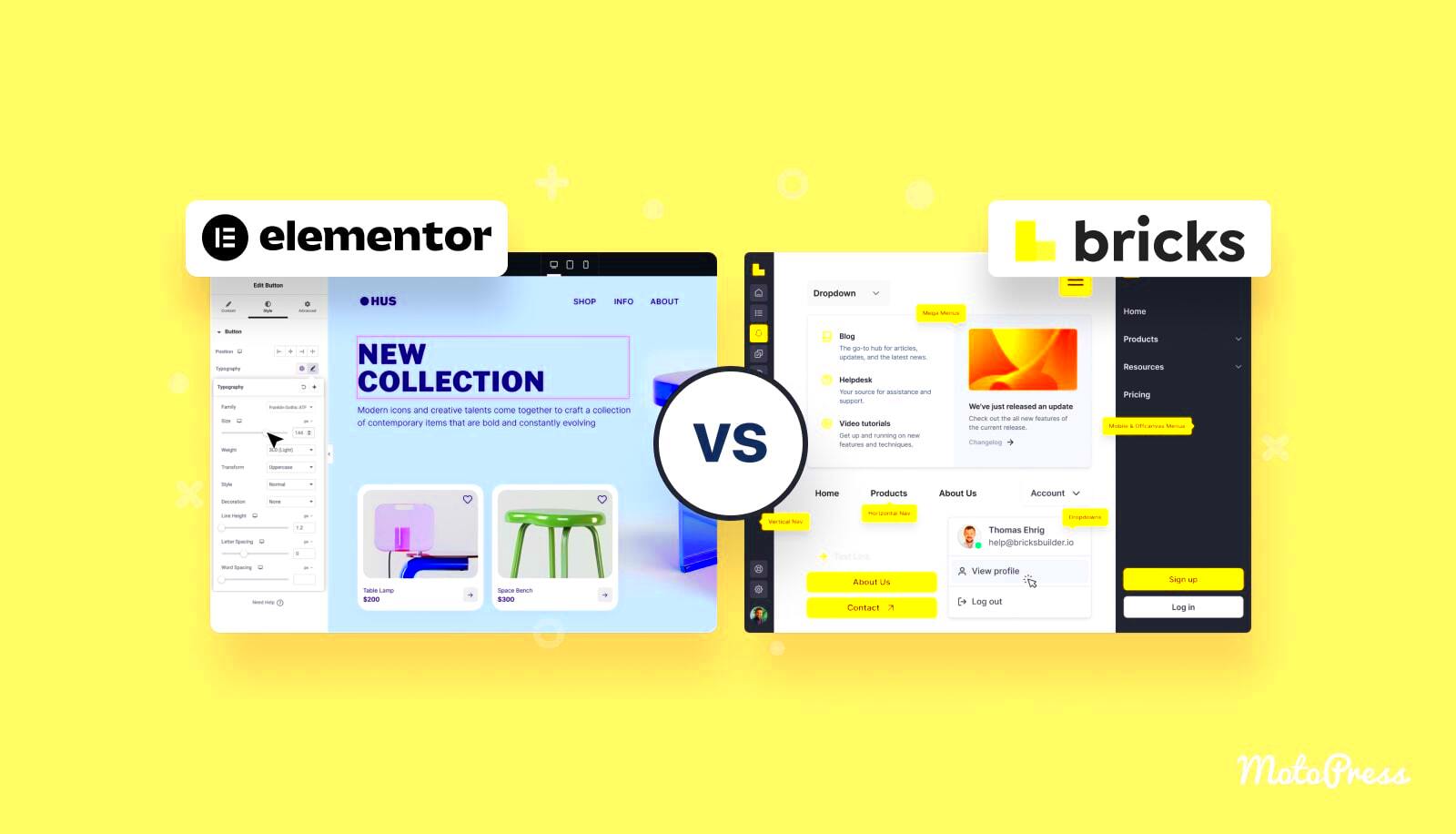
Bricks is an innovative website builder that stands out for its speed and performance-oriented approach. While still relatively new in the page builder arena, Bricks has been gaining a devoted following thanks to its impressive features that cater to both speed enthusiasts and design connoisseurs. Here’s a deep dive into what makes Bricks a noteworthy contender:
- Speed Optimization: Bricks uses a unique architecture that ensures fast loading times, making it ideal for performance-focused sites. With minimum generated code and optimized queries, it offers a smoother experience for both users and developers.
- Flexibility: You’ll find that designing in Bricks is incredibly flexible. You can create your layout by using a grid system and various pre-built components that easily adjust to your design vision.
- Full Theme Builder: Bricks offers a full theme-building experience, allowing you to customize headers, footers, and archive layouts without additional plugins. This cohesive approach helps in maintaining design consistency across your site.
- Dynamic Data: The platform supports dynamic content, enabling you to pull in data from custom fields, WooCommerce, and other sources. This is particularly beneficial for those who aim to create e-commerce sites or blogs that require constant updates.
- Responsive Design Controls: With built-in responsive controls, designers can fine-tune how their website looks across various devices. This means no more guesswork when it comes to mobile and tablet views.
In a nutshell, Bricks is designed for users who are serious about speed and flexibility while offering a robust set of features tailored for modern websites. It’s an exciting choice for those looking to push the boundaries of traditional page building.
Key Features of Elementor
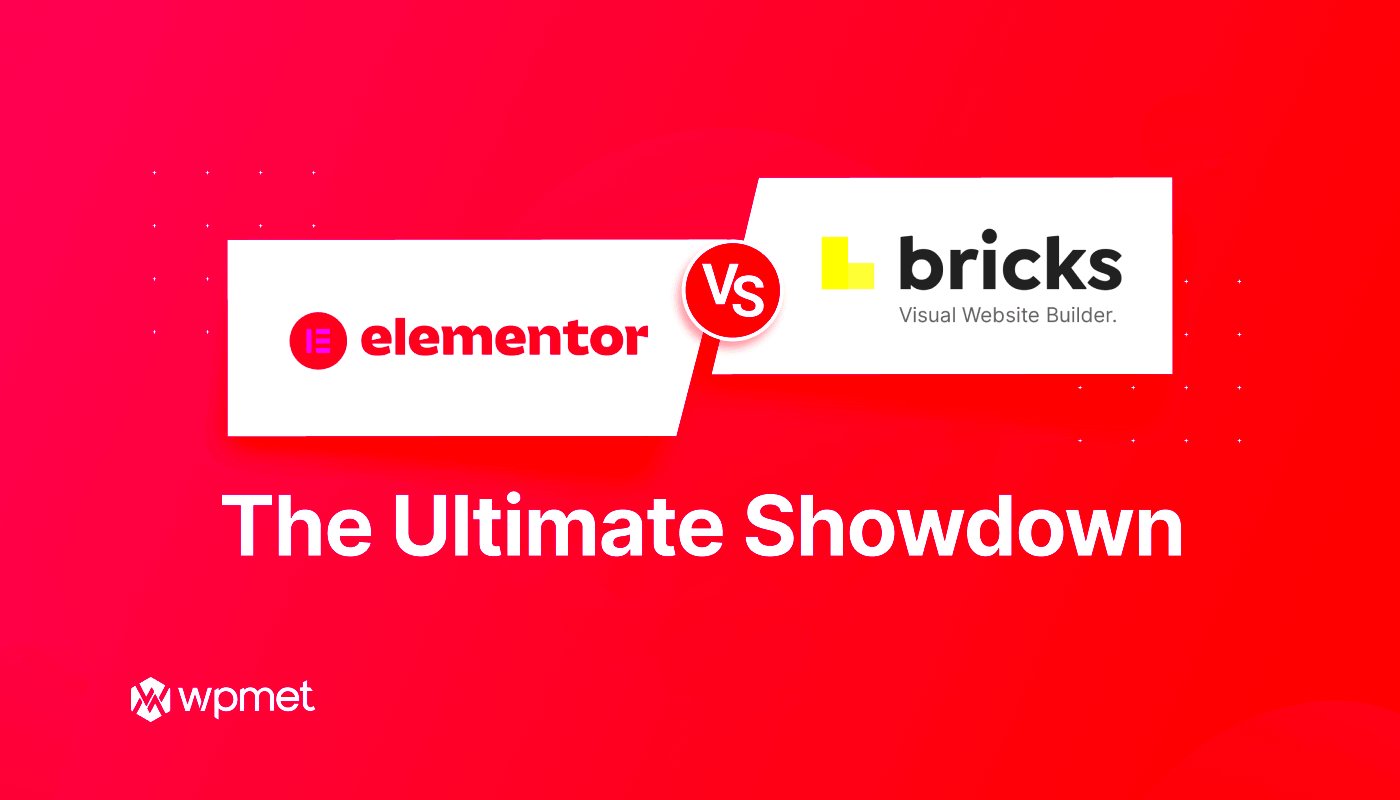
If you’re diving into the world of website building tools, Elementor is a name that often comes up. Why? Well, it boasts a range of features that make designing and customizing websites a breeze. Let’s break down some of the key features that set Elementor apart:
- Drag and Drop Editor: Elementor’s intuitive drag-and-drop interface allows users to create complex layouts without any coding knowledge. Just pick an element, drag it to your desired location, and voilà—it’s there!
- Responsive Design: With the rise of mobile browsing, Elementor ensures your designs are responsive. You can easily adjust how your site looks on desktop, tablet, and mobile views with just a few clicks.
- Template Library: Elementor comes packed with a library of pre-designed templates and blocks. You can choose from hundreds of templates or create your own, saving you heaps of design time.
- Extensive Widget Options: From basic text and images to advanced elements like sliders, accordions, and forms, Elementor offers a broad spectrum of widgets to enhance your website’s functionality.
- Theme Builder: This powerful feature lets you customize headers, footers, single post pages, and archive pages—all without touching a line of code. It gives users full control over their site’s design.
- Popup Builder: Want to create attention-grabbing popups? Elementor’s built-in Popup Builder allows for easy creation and customization of popups for promotions, email captures, and more.
- Global Widgets: With global widgets, you can insert the same widget in multiple places and make universal changes from one location. This feature streamlines the editing process immensely.
Overall, Elementor combines flexibility and efficiency, making it a go-to choice for many who want to build stunning and functional websites.
User Experience: Bricks vs. Elementor
When it comes to user experience, both Bricks and Elementor have their own take on what it means to build a website seamlessly. Let’s delve into how they compare in terms of ease of use, design capabilities, and overall satisfaction:
Ease of Use
| Feature | Bricks | Elementor |
|---|---|---|
| Interface Intuitiveness | Simple, especially for beginners. | User-friendly but with more options may overwhelm some. |
| Learning Curve | Steeper initially but rewarding. | Gentler for those familiar with drag-and-drop. |
| Customization Flexibility | Highly customizable, but may require some tweaking. | Wide array of customization options available. |
In terms of ease of use, Elementor excels with its straightforward drag-and-drop interface, making it accessible to beginners. However, Bricks offers powerful customization options that might appeal more to those who want a deeper level of control over their designs. While Elementor feels more inviting for novices, Bricks may require a bit more effort to master but rewards users with broader capabilities.
Design Capabilities
When it comes to design, both platforms shine, albeit in slightly different areas:
- Bricks: Known for its clean code output and fast performance, Bricks allows for exceptional customization without compromising speed. The design flexibility is impressive, catering to users who want detailed control over layouts.
- Elementor: Offers an expansive template library along with a diverse range of widgets. Its ease in creating responsive designs is very appealing, making it simple to switch between mobile and desktop views.
Ultimately, your choice may depend on your needs: Bricks for detailed customization and performance or Elementor for ease of use and vast resources.
Both tools offer unique advantages, ensuring that users can create stunning websites. It comes down to personal preference, and your specific needs as a web designer!
7. Performance and Speed Comparison
When it comes to building websites, performance and speed are crucial factors. After all, a site that lags can drive visitors away faster than you can say “loading…” So, how do Bricks and Elementor stack up against each other in this department?
Bricks is known for its lightweight architecture. It generates clean code, leading to faster load times. The framework is optimized for speed right out of the box, which can be a game-changer, especially for those who prioritize performance in their website goals. Many users report seeing quick page loading speeds, which positively affects SEO and user engagement.
On the other hand, Elementor is an incredibly popular page builder, but it can come with a hefty weight. Some users notice that sites built with Elementor can be slower, mainly due to the additional scripts and styles it loads to provide its many features. However, with proper optimization techniques—like using caching plugins and image optimization—Elementor can also perform admirably, but it might require a bit more effort on your part.
Here’s a quick comparison in table form to help visualize:
| Criteria | Bricks | Elementor |
|---|---|---|
| Loading Speed | Fast | Moderate to Slow (varies) |
| Code Quality | Clean and Lightweight | Can be Heavy |
| Optimization Effort | Minimal | Moderate to High |
In summary, if your primary concern is performance speed, Bricks may have the edge. But remember, with proper optimization, you can make Elementor sing as well!
8. Customization Options
When you’re creating a website, customization is key. You want to create something unique that reflects your brand’s identity. So, let’s dive into what both Bricks and Elementor offer in terms of customization options.
Bricks provides an incredible level of customization right from the start. With its intuitive interface, you can adjust styles, layouts, and elements effortlessly. Its real-time editing capabilities mean you can see your changes as you make them, which is always a plus. Users love the flexibility of Bricks, which allows for detailed control of responsive design settings for various device types.
Now, let’s talk about Elementor. This page builder is known for its extensive library of widgets and templates. You can create almost any layout you envision with its drag-and-drop functionality. One of the standout features is the ability to use custom CSS, which lets advanced users fine-tune their designs. Although some users find it slightly less flexible than Bricks in terms of overall structure, the sheer number of available templates and add-ons give it a significant edge.
Let’s break it down by features:
- Bricks:
- Real-time editing
- High-level customization
- Responsive design control
- Intuitive interface
- Elementor:
- Vast widget library
- Template options galore
- Custom CSS capabilities
- Wide range of third-party add-ons
In short, if you’re an advanced user seeking deeper customization, Bricks might be your go-to. If you love the idea of templates and widgets, Elementor offers many exciting options. The beauty of both is that they empower you to create stunning sites, but the choice ultimately depends on your needs and preferences!
9. Pricing Comparison
When it comes to building your dream website, the costs associated with different tools can play a significant role in your decision-making process. Both Bricks and Elementor provide various pricing structures that cater to different needs and budgets. Let’s take a closer look at how these two options stack up against each other in terms of pricing.
Bricks Pricing:
- One-Time Payment: Bricks offers a unique pricing structure with a one-time payment option, which is quite appealing for those who dislike subscription models. With this payment, you gain access to lifetime updates and premium support.
- Single Site License: Generally, the price for a single site license is very competitive, making it affordable for freelancers and small businesses alike.
- Future Costs: Since Bricks has no recurring fees, after your initial investment, you can allocate those funds elsewhere in your business.
Elementor Pricing:
- Subscription Model: Elementor operates on a subscription basis, which means you’ll be required to pay for either a yearly or a lifetime license to keep using premium features. This can add up over time if you manage multiple sites.
- Plan Options: They offer different plans suitable for single sites, multiple sites, and agencies. Each tier comes with its set of features, and the cost increases with the functionality added.
- Free Version Available: Elementor does have a free version that allows users to explore its features, although it’s somewhat limited compared to the Pro version.
In a nutshell, if you want to avoid ongoing fees, Bricks presents a cost-effective solution. On the other hand, Elementor might be more appealing for users who prefer flexible, tiered subscriptions that grow with their needs.
10. SEO Friendliness
In the digital age, ensuring your website is optimized for search engines is paramount, and both Bricks and Elementor come equipped with features aimed at improving your SEO. But how do they measure up when it comes to actually enhancing your website’s visibility on search engines? Let’s delve into the SEO friendliness of each tool.
Bricks SEO Features:
- Clean Code: Bricks is built with clean, semantic code, which is essential for search engines to crawl your site efficiently.
- Speed Optimization: Speed is a ranking factor for Google, and Bricks places a strong emphasis on performance. Users can optimize their images and use lazy loading features, which can significantly enhance page load speeds.
- Structured Data Support: Bricks allows developers to implement structured data easily, which helps search engines understand the context of your content better.
Elementor SEO Features:
- Responsive Design: Elementor automatically creates mobile-responsive designs, a critical aspect of SEO. Google prioritizes mobile-friendly sites in its rankings!
- SEO Plugins Compatibility: It works smoothly with popular SEO plugins like Yoast and Rank Math, allowing users to implement necessary SEO optimizations with ease.
- Custom URL Structures: Users can create clean and SEO-friendly URLs using Elementor, enhancing the likelihood of ranking higher in search results.
In summary, both Bricks and Elementor offer robust features that can help to improve your site’s SEO. Your choice may ultimately depend on which specific features align with your particular SEO strategy and needs.
Support and Community
When considering any tool for website design or development, the level of support and the strength of the community behind it are crucial factors. Let’s dig into how Bricks and Elementor stack up in these areas.
Bricks: One of the highlights of using Bricks is its commitment to customer support. The team behind Bricks tends to be quite responsive, often addressing queries and issues swiftly. Users can reach out through the official support channels, which are usually available during business hours. However, being a somewhat newer player in the market, the community surrounding Bricks is still growing. There are forums and social media groups forming, but the volume of shared knowledge isn’t as vast as that of more established platforms.
Elementor: Elementor, having been around longer than Bricks, boasts a massive community and a wealth of resources. With millions of users worldwide, you can find an answer to nearly any question just by doing a quick Google search. The official support is robust, supported by extensive documentation, tutorials, and community forums. Plus, there’s a vibrant ecosystem of third-party developers who create add-ons and resources that enhance Elementor’s functionality.
| Feature | Bricks | Elementor |
|---|---|---|
| Response Time | Fast | Varies |
| Community Size | Growing | Large |
| Resource Availability | Moderate | Extensive |
In conclusion, if immediate support and community knowledge are your priority, Elementor might be your best bet. But Bricks is catching up and has its own strengths that are worth considering.
Use Cases and Best Fit
Choosing between Bricks and Elementor isn’t just a matter of preference; it’s all about the specific use cases and the context in which you plan to apply them. Let’s explore where each tool shines.
Bricks: This is the ideal choice for users who prioritize performance and customizability. It’s particularly well-suited for developers who want to create unique layouts without being boxed into predefined templates. If you’re building a site that requires intricate design work or involves a lot of custom code, Bricks will provide you with the flexibility you need. Additionally, it’s a good fit for portfolios or any creative project where visual appeal is paramount.
Elementor: In contrast, Elementor shines in its ease of use, making it a great match for beginners or non-tech savvy users. If you’re creating simple landing pages, blogs, or small business websites where speed and usability are key, Elementor is your go-to. It also has a rich array of pre-designed templates, which can save you time and effort. Plus, the ability to easily integrate with various marketing tools makes Elementor a favorite for those looking to generate leads quickly.
- Bricks: Best for:
- Custom design-heavy sites
- Developers looking for flexibility
- Creative portfolios
- Elementor: Best for:
- Beginners or those needing an intuitive tool
- Landing pages and small business sites
- Quick setup and ease of use
Ultimately, understanding the context of your project will guide you in making the right choice between Bricks and Elementor.
Conclusion
In the realm of WordPress page builders, both Bricks and Elementor stand out for their unique features and capabilities. Choosing the right one can significantly impact your website’s design, functionality, and user experience. Below is a summary of how these two tools compare in key areas:
| Feature | Bricks | Elementor |
|---|---|---|
| Ease of Use | Intuitive interface with easy drag-and-drop functionality. | Also user-friendly, with a large community for support. |
| Speed | Lightweight and faster load times due to cleaner code. | Can become slower due to the number of widgets and assets. |
| Customization | Highly customizable with a focus on performance. | A plethora of templates and widgets available. |
| Pricing | One-time payment model with comprehensive features. | Subscription-based with tiered pricing plans. |
| Community Support | Smaller community but growing rapidly. | Large community with extensive resources and tutorials. |
In conclusion, both Bricks and Elementor offer distinct advantages and cater to different user needs. If you prioritize speed and a one-time purchase, Bricks may be your ideal choice. On the other hand, if you seek a vast array of customization options and extensive community support, Elementor might be better suited for you. Ultimately, your choice should align with your specific requirements and design goals.

